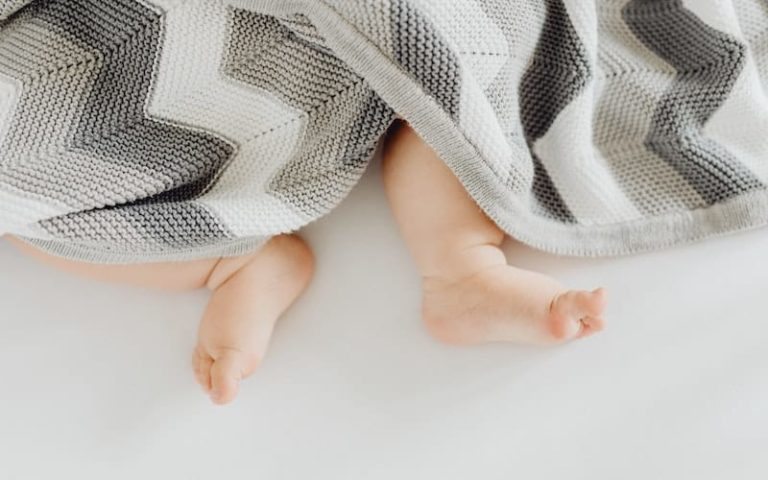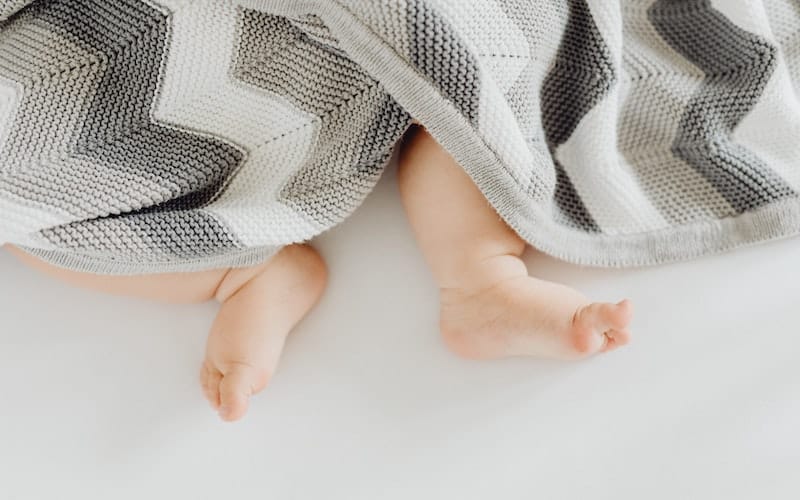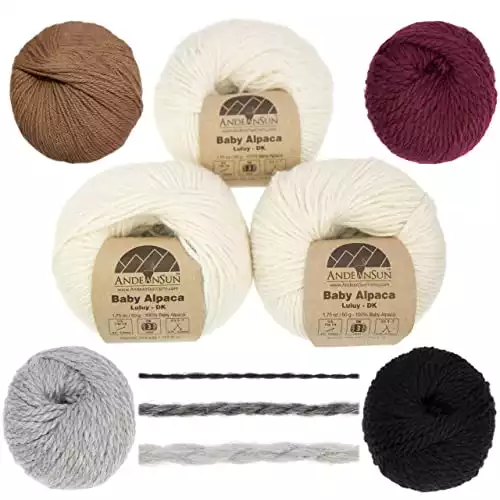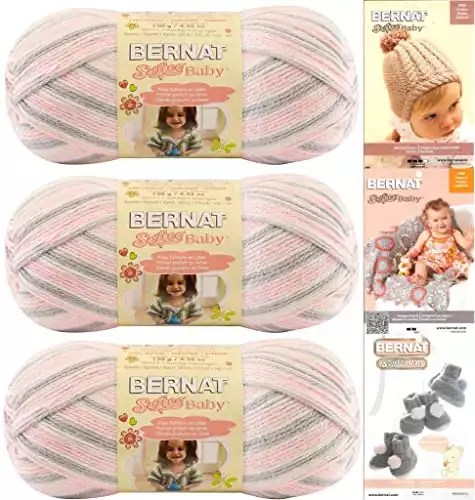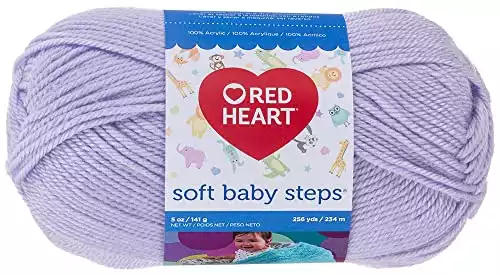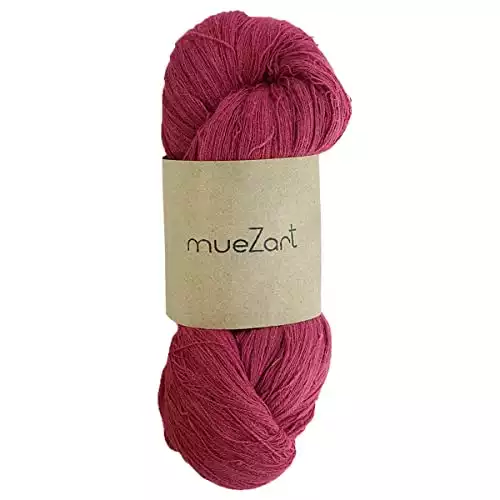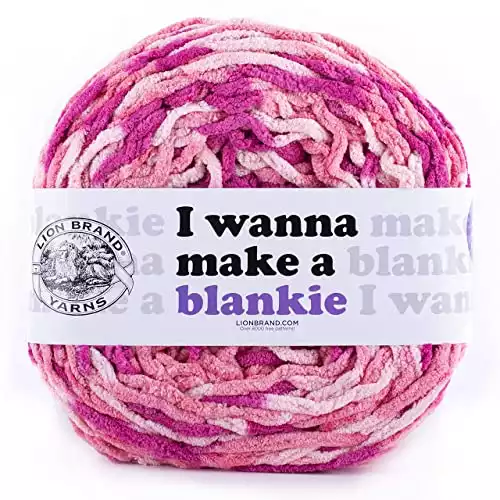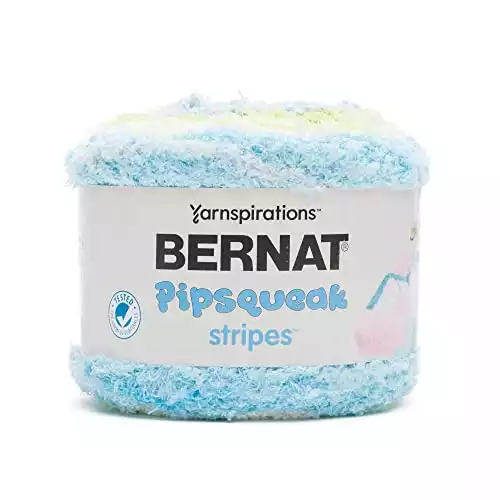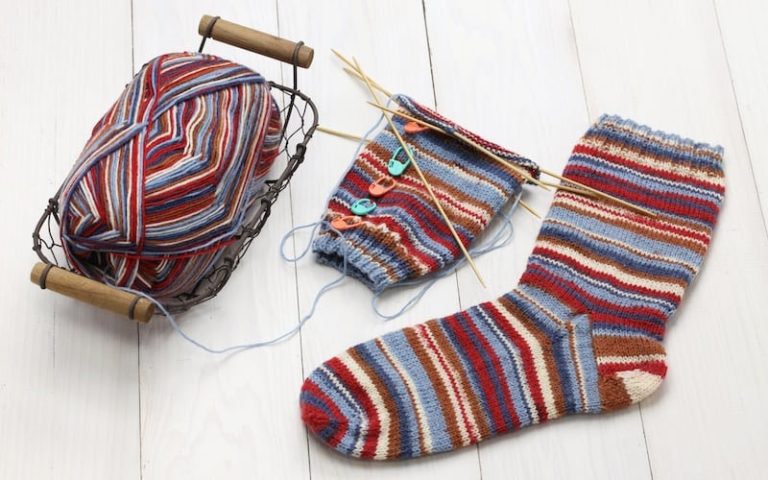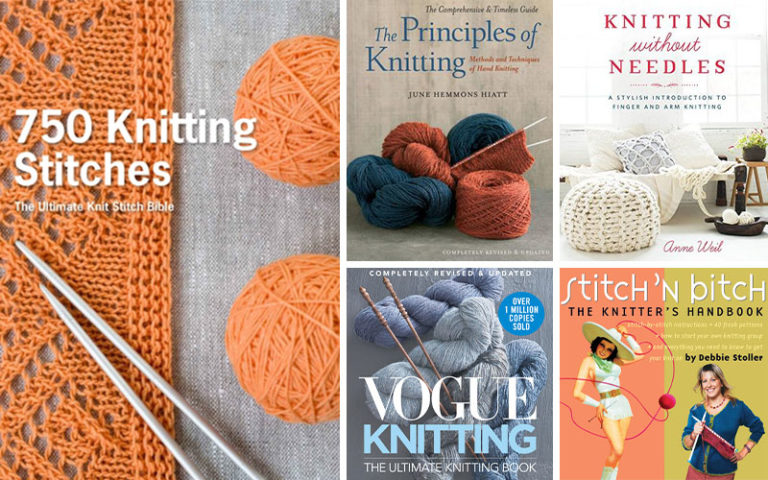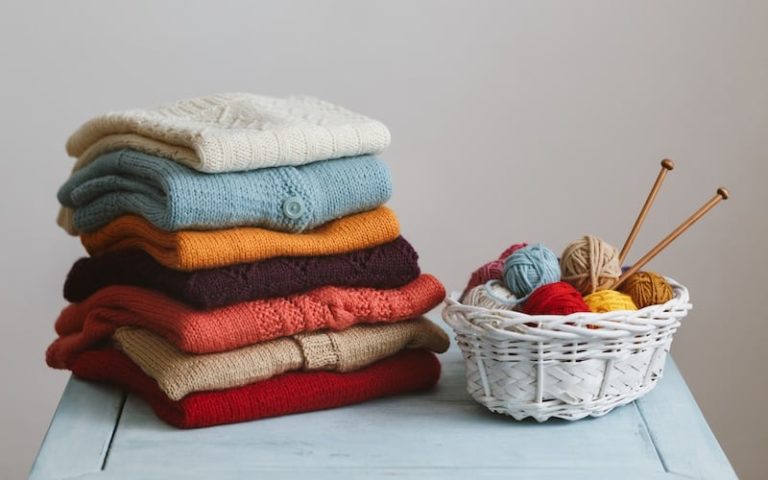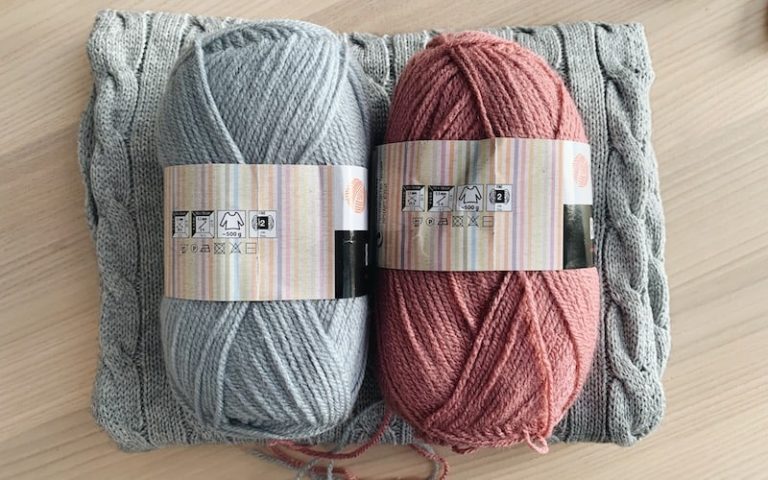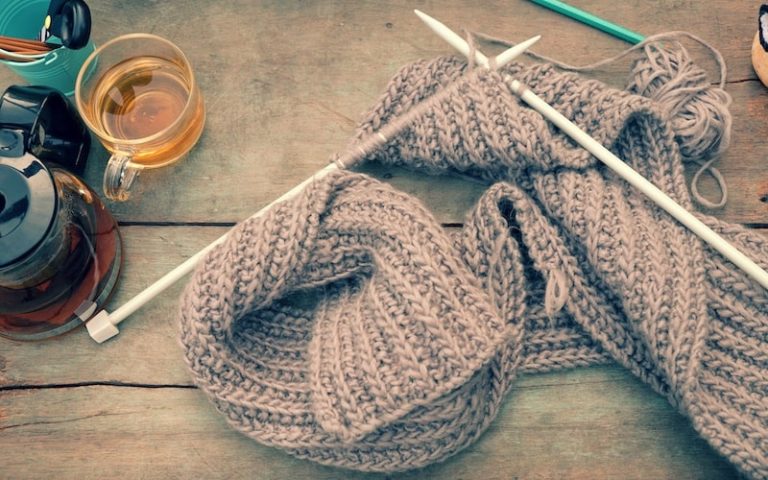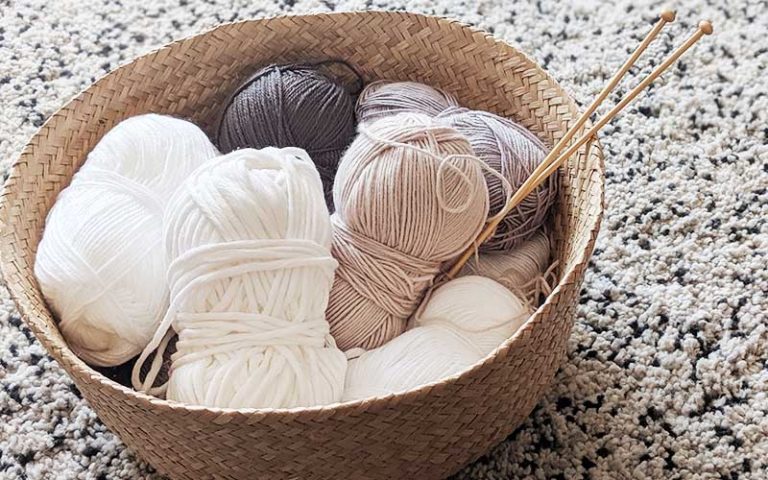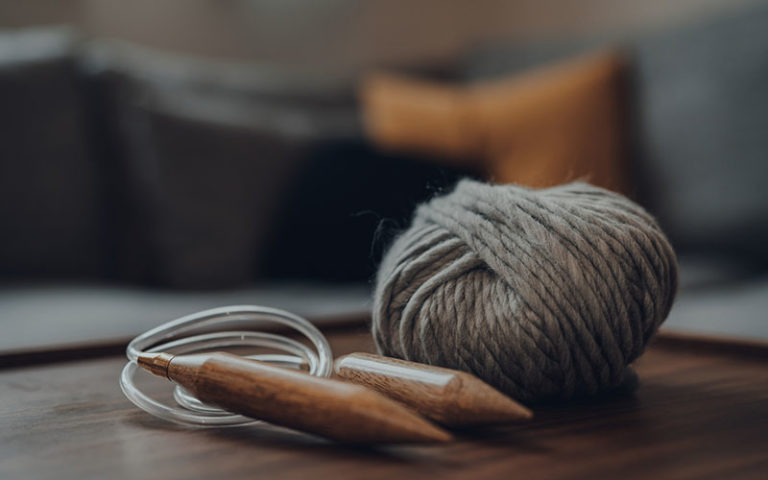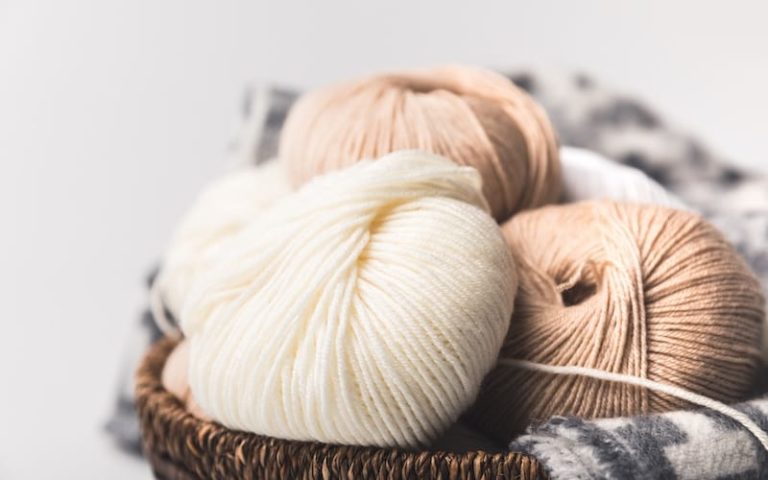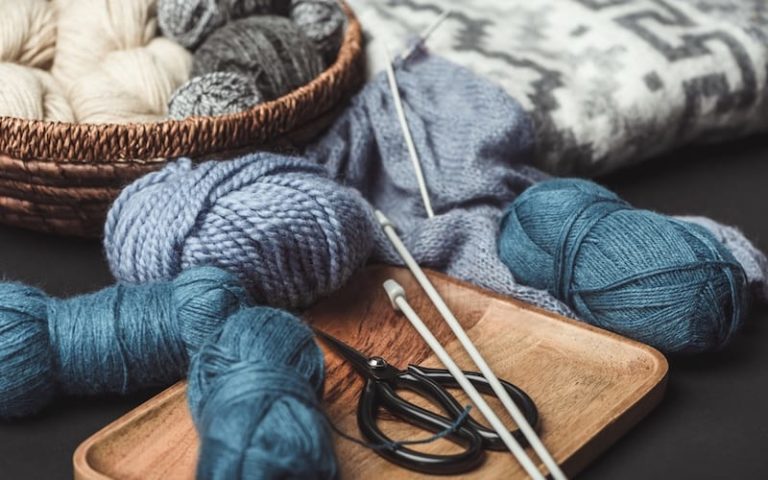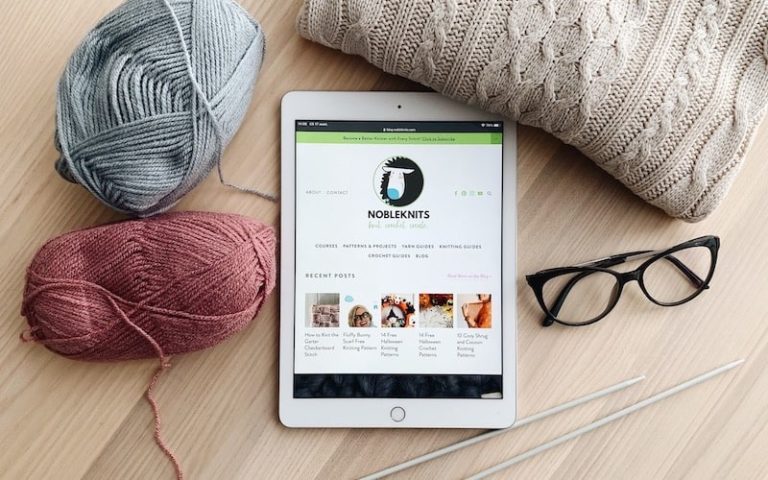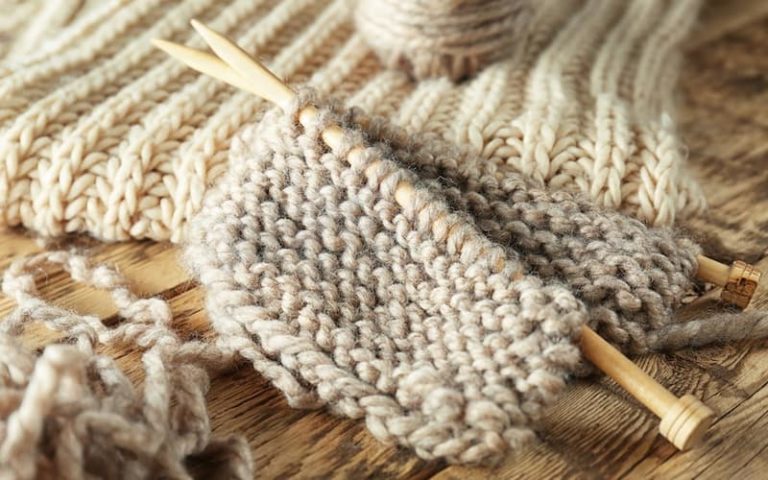A hand-knitted baby blanket is a very special thing: this comforting accessory may very well become the child’s most treasured item. Therefore, it needs to stand up to heavy use, and for this needs a very particular type of yarn.
What are the best yarns for knitting a baby blanket?
To make the perfect baby blanket, you need the perfect yarn. We’ve compiled a list of the best yarn for knitting a baby blanket, with a range of colors, styles and materials to meet virtually any requirement.
1. Andean Sun Baby Alpaca Yarn
This baby alpaca yarn is a soft, warm, and worsted weight, perfect for a winter baby blanket. The yarn comes in a pack of three skeins, a good amount for knitting a baby blanket.
Although the fuzzy texture may be difficult for beginners to work with, this texture makes for a lovely, cozy blanket. More experienced knitters will love the results they get from this natural material.
What we like:
- Super soft: Baby alpaca wool is extremely soft and won’t irritate sensitive baby skin.
- Warm: Alpaca is one of the warmest natural materials you can get and is ideal for cold weather.
- Medium weight: The yarn is medium, or worsted weight and makes an excellent winter blanket.
- Eco-friendly: Andean Sun yarn is made from sustainably-produced alpaca wool.
What we don’t like:
- Fuzzy texture: Some knitters may find the fuzzy texture of baby alpaca wool difficult to work with.
The weight, natural warmth and texture of this baby alpaca yarn makes it perfect for a winter-weight baby blanket.
2. Bernat Softee Baby Yarn
This three-pack of baby yarn is fully synthetic, being 100% acrylic. It has variegated pastel tones and is a medium (worsted) weight.
This acrylic yarn is effortlessly soft, so won’t irritate the sensitive skin of your little one, at the same time as being machine washable. Like many super-soft yarns, the downside is that it can tangle or split.
What we like:
- Acrylic: The acrylic material is soft and cozy, while being completely machine washable – perfect for busy parents!
- Variegated colors: The yarn is a variegated mix of pink, gray, and white, making a nice pastel blanket that won’t show dirt and stains too drastically.
- Color match: All three skeins come from the same dye lot so you can be assured that the colors will match across the entire blanket.
What we don’t like:
- Prone to tangling: Some customer reviews on Amazon say that the super soft yarn is prone to tangling and fraying and so can be difficult to work with.
Although prone to tangling, you can help to avoid this issue while you work by using a knitting bowl or something similar to keep your yarn organized.
3. Bernat Baby Blanket Yarn
As the name suggests, this yarn is specifically designed for making baby blankets. The chenille-style, 100% polyester yarn is machine-washable and hypo-allergenic: everything you look for in a hardy yet comfortable accessory for little ones.
Whether you choose the neutral tone of baby sand, or go for variegated pinks or bold blue, this yarn will knit up into a spectacular blanket. The bulky-gauge yarn is not suitable for a lighter blanket, but is perfect for a chunky, unique project.
What we like:
- Soft yet durable: This polyester yarn feels super soft while being sturdy enough to stand up to heavy use and regular washes.
- Choice of colors: We love the cozy “baby sand” shade, but this yarn comes in a larger number of shades including variegated tones.
- Heavy weight: You’ll be able to work up a blanket in no time thanks to the bulky knitting gauge.
What we don’t like:
- Not suitable for summer: Being a heavier weight, this yarn will produce a bulkier, winter-weight blanket that won’t be suitable for all climates.
This bulky yarn is perfect for making a soft, warm, and cozy blanket for winter in your choice of a solid or variegated color scheme.
4. Red Heart Soft Baby Steps Yarn
This 100% acrylic, worsted-weight yarn is designed to be super soft for baby clothes or blankets. Suitable for machine wash and tumble dry, comes in a range of shades, from solid pastels to multicolored variegated tones.
On the downside, its open-twist, loose ply is better suited to knitting than crocheting, as a crochet hook may easily split the yarn.
What we like:
- Easy care: This 100% acrylic yarn is machine-washable and can also go through the clothes drier, making life easy for busy parents.
- Soft for sensitive skin: The 100% acrylic material is super soft and won’t irritate sensitive baby skin.
- Warm: Being worsted weight, this yarn will knit or crochet up a nice, cozy blanket.
What we don’t like:
- Loose ply: Some reviewers complain that the open-twist ply of this yarn is difficult to work with, especially for crocheting.
An easy-care yarn that is machine washable and dryable, this acrylic yarn is also meltingly soft.
5. Muezart Silk Yarn
If you want to use a natural fiber for a baby blanket, silk is an excellent option. This fine-weight silk yarn will make a light baby blanket for summer.
Made from Eri silk, this yarn is soft, strong and 100% natural. It is ideal for warm and humid climates, being airy and breathable, though not the best choice if you want to make a warm blanket for winter.
What we like:
- Breathable and versatile: The natural silk fibers are cool in hot weather while offering some warmth against the cold.
- Silky soft: The yarn is made with Eri silk, a traditional fiber used in India for its soft feel and strength.
- Eco-friendly and ethical: Not only is the yarn sourced from sustainable silk, but it is colored by local dyers in India who use plant-based dyes that won’t harm the environment.
What we don’t like:
- Hand wash only: This yarn is not machine-washable, so the blanket will need to be washed by hand in cold water with a mild detergent.
The downside of natural materials like silk is that you won’t be able to put the blanket through the washing machine or clothes dryer. However, it is an eco-friendly option that is both soft and strong.
6. Lion Brand I Yarn Wanna Make a Blankie Yarn
Another yarn designed specifically for making baby blankets, this yarn is soft, durable and machine-washable. The large skein or “cake” is big enough to make a medium-sized baby blanket.
You’ll be able to whip up a medium-sized baby blanket with just one skein of this soft yet strong polyester yarn. And if you have some left, using a yarn winder can help organize the leftovers.
What we like:
- Soft yet strong: This 100% polyester yarn is strong and durable, with having a super-soft, chenille feel.
- Easy-care: The finished blanket will stand up well to regular machine washing and tumble drying without damaging its appearance.
- Heavy weight: The yarn is super bulky weight, so you’ll knit or crochet a heavy blanket in no time at all.
What we don’t like:
- Skein could be bigger: One skein will make a 40-inch blanket, so if you want to make a larger blanket that will fit a toddler, you’ll need a second skein.
Be aware that this is a super bulky weight yarn. This means you’ll be able knit up your blanket in a short period of time, but it will be very chunky, so make sure that’s the look you’re after!
7. Bernat Pipsqueak Stripes Yarn
Bernat “Pipsqueak Stripes” yarn is bulky weight and 100% polyester, with a fluffy chenille texture. As the name suggests, the variegated color scheme creates stripes as you knit.
Unfortunately, this is another yarn that can be tricky to work with, so you’ll need to be careful to avoid tangling. However, you’ll love the soft texture of this fluffy, chenille yarn.
What we like:
- Self-striping: You don’t need to worry about changing between different colored yarn: this yarn creates its own pattern of colorful stripes.
- Range of colors: There are a variety of variegated color schemes available, but we love “meadow” with its blues, greens, and creams.
- Extra-warm: The polyester fibres are soft and warm, and the bulky gauge will create a heavy, winter gauge.
What we don’t like:
- Difficult to work with: Some customer reviews saw that this plush yarn tangles easily, so can be difficult to work with.
A bulky-weight yarn, this will knit up a heavy winter yarn in variegated stripes in a range of pastel tones.
Baby blanket yarn: a buyers’ guide
A baby blanket needs to be soft enough for sensitive baby skin, comfortable, and be effective in regulating the child’s body temperature. To knit a blanket that meets all these requirements, you’ll need to be careful to choose the right yarn.
How to choose the right yarn for a baby blanket
Let’s take a look at the key things to consider when choosing the right yarn to knit a baby blanket.
Yarn weight
You may think that you should only use lighter weight yarn for baby blankets, similar to baby booties or other baby garments. However, you can actually use a range of yarn weights to knit a baby blanket, depending on your needs.
A lighter-weight yarn such as a fine or super fine or sock yarn will make a great summer blanket for a little one. Medium/worsted weight or even bulky weight yarn can be used for cozy blankets to suit a colder climate.
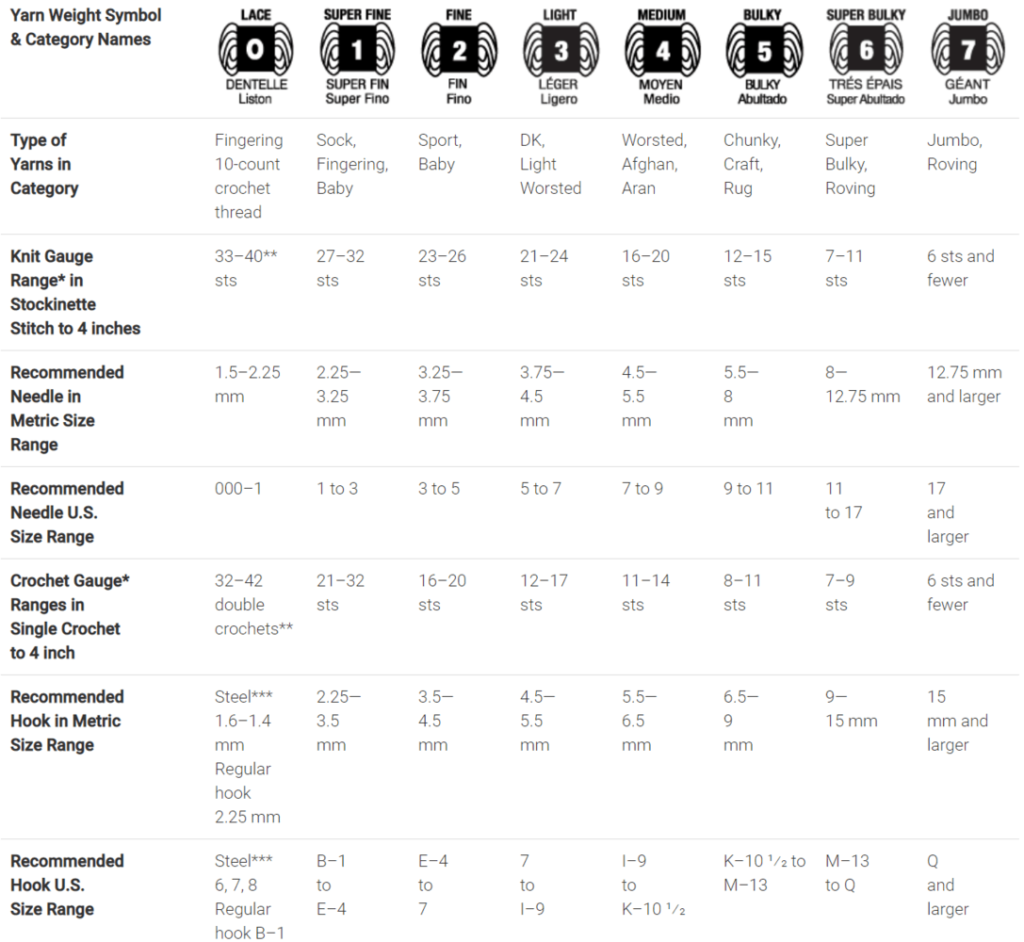
An advantage of using a heavier-weight yarn is that the large gauge means that you can knit the same-sized blanket in a shorter period of time. Many beginners also find heavier weights – worsted weight and above – easier to work with compared to a fine yarn.
On the other hand, lighter-weight yarns are better for showing complicated patterns or stitches, which may get lost if you use a bulky yarn.
No weight of yarn is better than another when it comes to making a baby blanket, though each is suited to specific climates.
Ultimately, the choice of yarn weight comes down to personal taste, and the kind of blanket you want to make. If you use a bulky or super bulky weight this will create a larger, chunky blanket, while lighter-weight yarns will produce a finer item.
Yarn materials
As well as being soft and comfortable, it is important for a baby blanket to be highly durable. Every baby blanket has to stand up to heavy use and regular washing, so the yarn needs to be strong.
Types of yarn that fit these requirements include acrylic, polyester, and cotton. These materials are extremely soft and therefore best for babies’ skin, which is sensitive and delicate.
Wool, on the other hand, is not generally a good option for baby blankets as it can irritate sensitive baby skin. However, there are certain types of wool that are softer and therefore well-suited for this purpose, such as angora or baby alpaca wool.
You should choose a yarn material that is appropriate to the climate where it will be used. Specifically, it should be suitable for the baby’s first season as newborns and young babies can’t regulate their body temperature well.
Therefore, if the baby is going to be born in summer you’ll want to make a lighter blanket than if the birth is due in winter.
When it comes to natural materials, if the blanket is to be used in cold conditions, warm, animal-based materials such as alpaca or angora are best.
On the other hand, for hot weather you are better sticking to plant-based yarns like cotton or bamboo.
Another natural material that will keep your baby cool is silk. Although silk is generally too fragile to meet the demands placed on a baby blanket, there are exceptions, such as Eri silk.
Most commonly yarns for baby blankets are made synthetic materials, usually acrylic or polyester.
These materials can be engineered so that they are warm and soft, yet durable. This makes them perfect for making a baby blanket.
Unlike most natural materials, acrylic and polyester yarns can usually be put through the washing machine and clothes dryer, making the blanket easy to look after. Another big plus of synthetic yarns is that they are generally very affordable.
Color palette
The color you use to knit your baby blanket will largely come down to personal preference. In reality, the baby is unlikely to notice the color of their blanket, so this is more about the parents’ tastes, whether the blanket is for your own child or if you are making it as a gift.
If you are planning to gift the blanket, check whether the parents have a particular color scheme for their nursery. Although not essential, it will be a nice touch if your blanket matches the nursery colors.
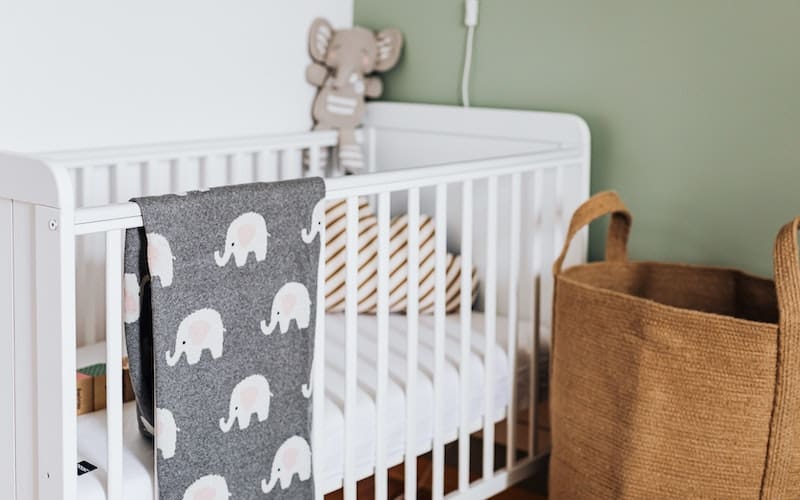
Yarns suitable for making a baby blanket are available in a range of colors, both solid tones and multi-color variegated yarn. In both cases, pastel colors are generally recommended, as these are calming tones that will avoid over-stimulating the infant.
One practical consideration to remember is that very light colors will show dirt and stains so are best avoided.
As with any knitting project, single-color yarn is best for intricate knitting stitches as it allows the pattern to stand out. On the other hand, variegated yarns add interest and look best with plain stitches such as stockinette stitch.
The latter is an easy way to create an interesting effect, as a variegated yarn will automatically create a stripe or pattern without the need to change between different yarns. Self-striping variegated yarn can also hide stains to some extent.
Yarn texture
One of the most important aspects of a good yarn for a baby blanket is the texture: you want yarn with a soft texture that will produce a cosy and comfortable blanket. On the other, they need to be strong enough to stand up to regular and potentially rough use.
The materials mentioned above – namely acrylic, polyester, alpaca, angora, cotton, Eri silk, and bamboo – are all soft yet hardy. Within these materials, there are certain variations in terms of texture. For example, they may be fluffy, or have a chenille-type texture.
- Chenille textures are a good choice because it is smooth and cozy but easy to knit or crochet.
- Fluffy-textured yarns create a nice, cozy blanket but can also be a bit tricky to work with.
Another consideration is whether the yarn has a texture that will felt when washed. This can happen all too often when an item is washed regularly, such as a baby blanket, and can all but ruin the appearance of the item.
From this perspective, smooth-plied yarns are best, as the smoothed fibers help to prevent felting.
Care instructions
The last thing a busy parent of a young baby wants to worry about is washing their baby blanket by hand. If the blanket is going to be used regularly, this means that it will also need to be washed regularly.
Therefore, if at all possible, the yarn should be machine-washable or at least easy to care for.
Washable yarn will be able to withstand high temperatures and go through a clothes dryer. The most washable yarns are cotton, acrylic and superwash wool.
Wool, as an uncomfortable and potentially itchy material, is not generally suited to baby blankets. Therefore the most washable yarns for baby blankets are acrylic and polyester ones such as Lion and Red Heart yarn.
To let you (or the recipient) properly care for the finished product, make sure you save one of the labels that came with the yarn, as this should include care instructions. This will let you properly care for the finished blanket and make sure it stays in good condition.
If you want to be doubly sure that the yarn will make a blanket that will stand up to regular washing you can test this out before you start working on your project. Knit a swatch, put it through the washing machine and dryer at high temperatures and see how it stands up!
How much yarn do you need for a baby blanket?
The amount of yarn you’ll need to knit your blanket will greatly depend on the size of the blanket you want to make. A small blanket can be made with just one skein of yarn.
Ideally, a baby blanket should be around 40 to 60 inches long, and rectangular in shape. This size is sufficient for toddlers and will fit nicely in a crib.
You could make a smaller blanket for a younger baby, but it is better to knit a larger blanket that the child can grow into. Otherwise, you may be knitting another blanket in a few months!
For a good-sized blanket about 60 inches long, you will need three or four skeins of yarn.
Knitting vs crocheting a baby blanket: What to consider
You can make a beautiful baby blanket either with knitting or crocheting. For both mediums, there are certain things you need to keep in mind to get the best results.
When knitting a baby blanket you will need to consider:
- Needle size: Different yarns require different sized needles depending on the yarn’s weight and other characteristics. Check the yarn’s label for the recommended needle size.
- Knitting pattern: Be sure to avoid any pattern with large holes or buttons, as these can be a safety hazard for babies.
- Stitch choice: If you are designing your own pattern for your baby blanket, garter, seed and stockinette stitches are all great choices for a baby blanket. If you are aiming to use as little yarn as possible, stockinette stitch is the most economical.
To crochet a baby blanket you should think about:
- Hook size: Just like knitting needles, each yarn was an ideal hook size, and the recommended crochet hook size should also be shown on the yarn label. Keep in mind that using a heavier yarn and larger hook (size J or larger) will let you work up your blanket much more quickly.
- Finishing: Make sure to neatly finish your blanket as loose threads could be a safety hazard.
- Tightness: Open-weave, loose-ply yarns are difficult to work with, whether knitting or crocheting, but this is particularly true when crocheting, so it is best to look for a tighter yarn.
- Yarn quantities: Although it will depend on the stitches used, crocheting generally uses a bit more yarn than knitting so you may need an additional skein.
Whether you choose to knit or crochet your baby blanket, as long as you choose a suitable yarn and pattern, it will be hard to go wrong!
Final thoughts
A baby blanket not only provides warmth, but also comfort to little ones. Treasured baby blankets often become an important item, and many toddlers are inseparable from their blankie.
There are a number of essential considerations when choosing the right yarn for a baby blanket. It must be soft and comfortable, but at the same time strong and durable, as well as easy to care for.
Luckily, there are plenty of options that fit these criteria, in a range of materials and a number of stunning colors!
Looking for more knitting inspiration? Check out our other articles such as the best knitting blogs and knitting books, and share this article with your friends and fellow knitters!

